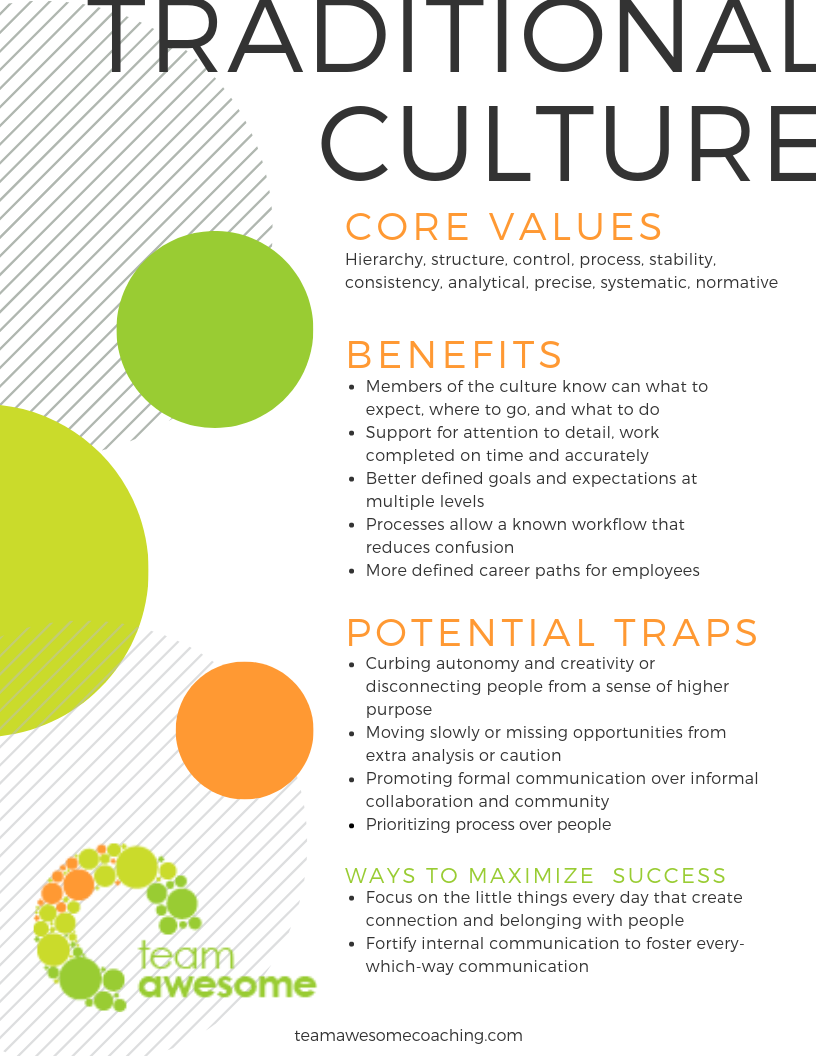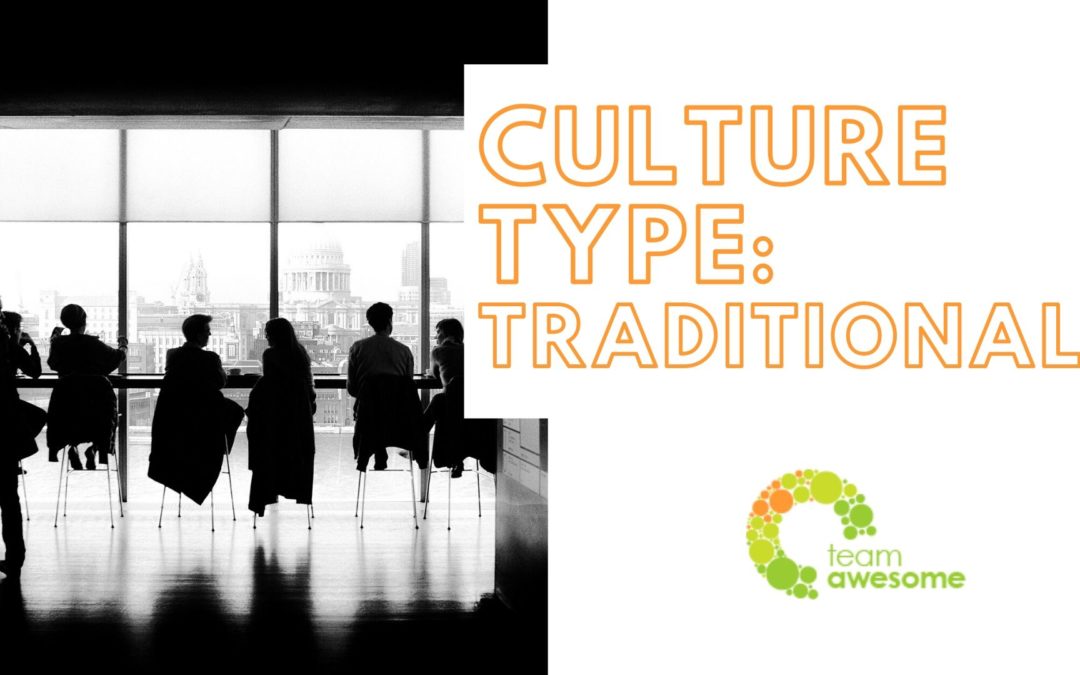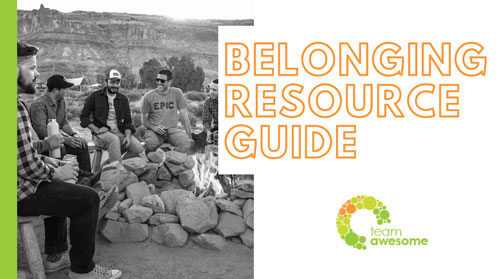As many of you are examining your culture this year, I wanted to offer you some broader perspective of what your company culture might look and feel like to your teams, and offer some very intentional ways to continue to develop your team culture into what you want to be. First, let’s cover a few principles to keep in mind when it comes to culture.
- EVERY organization of every size has a culture. It naturally exists, whether you are aware of it or not or whether you are doing anything about it or not. We must first come to terms with the fact that the question is not “if” you have a culture, but “what” that culture looks like.
- Every type of culture has some pros and cons. Just like as individuals, we cannot be all things to all people. The key is to have awareness of what type of culture your organization has, and then choose how you want to lean into your strengths or mitigate where you are getting stuck. No type is good or bad, better or worse.
- Leadership of the organization plays a large role into how the culture shows up. When you think of what type of culture your company has, think bigger picture in the overall sense, not just for your immediate business unit. Every organization will have elements of all culture types (and leaders with varying styles), but tend to have a primary culture type.
Here we have simplified styles into four culture types. Hopefully, this will provide you with some ideas and introspection about where to go next to cultivate your company culture with intention.
Here is one of the four culture types that we are focusing on today.
Traditional
Traditional cultures are common in many corporate environments, particularly larger organizations. There tends to be a clear hierarchy and an organized structure to how work gets done and who does it. Traditional cultures tend to offer a sense of control, stability, and consistency. There are generally processes built to be more analytical, precise or systematic. Traditional cultures are often more normative where there are either spoken or unspoken standards of behavior by which most people operate.
Some of the benefits of a Traditional culture include:
- Members of the culture know can what to expect, where to go, and what to do
- Support for attention to detail, work completed on time and accurately
- Better defined goals and expectations at multiple levels
- Processes allow a known workflow that reduces confusion
- More defined career paths for employees
A Traditional culture might be getting stuck in these traps:
- Curbing autonomy and creativity or disconnecting people from a sense of higher purpose
- Moving slowly or missing opportunities from extra analysis or caution
- Promoting formal communication over informal collaboration and community
- Prioritizing process over people
If this sounds like your culture, here are a few things you might try to overcome roadblocks:
- Focus on the little things every day that create connection and belonging with people
- Fortify internal communication to foster every-which-way communication
Resources:
Enjoy these links to articles that will help you to:
Looking for some solutions to help your team?
- Try the Moving from Diversity & Inclusion to Belonging keynote to understand how to connect more deeply with your team and create belonging
- For a more in-depth solution, check out the Culture Clinic program
Interested in seeing the other types? Check them out here:
About the author:
Katie Rasoul is the Chief Awesome Officer for Team Awesome, a leadership coaching, and culture consulting firm. She is a TEDx speaker alumna, author of the best-selling book, Hidden Brilliance: A High-Achieving Introvert’s Guide to Self-Discovery, Leadership and Playing Big, and co-host of The Life and Leadership Podcast.




Recent Comments